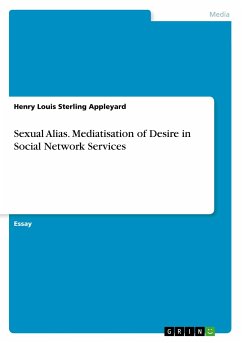Essay from the year 2017 in the subject Communications - Public Relations, Advertising, Marketing, Social Media, grade: A, University of Auckland, language: English, abstract: The relationship between sexuality and communication technologies is changing. In media life, people are increasingly seeing themselves and others through the social network service. Social media users "sign up" their name, age, and sex before they have access. Once attained, the user is afforded a 'configurable networked self' that is voluntarily serviced with and within the social network. With growing aspects of use, especially in younger people to 'communicate their own life story', the SNS poses and imposes differential user-experiences rooted in media logics. For media to embed its logic into social-sexual practice it must contend with deep human emotions or 'sub-processes' that are at the core of psychological development; 'how people understand themselves, how do they think of themselves; do they label themselves, and do they announce or enact that identity to an audience or in a social setting?'. A person's sexuality then, their gender expression and identity, are part of one's developed consciousness. Principled archetypes - the socio-cultural norms and values of femininity and masculinity - are violently in flux. Under the integration of social media into social life the psychological recognition and reconfiguration of one's sex i.e, their sexual identity, orientation, fantasies, feelings, behaviors, and desires, are becoming part of an assemblage of interdependent media networks. As Walgrave et al lament, such logistics change 'how the characteristics of SNSs accommodate needs inherent to adolescent development [which] may explain why adolescents have rapidly and enthusiastically integrated SNSs into their daily lives'. The evolving characteristics of SNSs are not only dependent on active interactional and communicative needs executed within the service but also produce differential user experiences based on the information supplied with the service. The paper investigates this phenomenon, specifically how age, location and/or sex effects the Facebook SNS user experience - to explore the relatively uncharted territory of how new media logics symbiotically service people's desires as a form of media-embedded practices.
Hinweis: Dieser Artikel kann nur an eine deutsche Lieferadresse ausgeliefert werden.
Hinweis: Dieser Artikel kann nur an eine deutsche Lieferadresse ausgeliefert werden.








